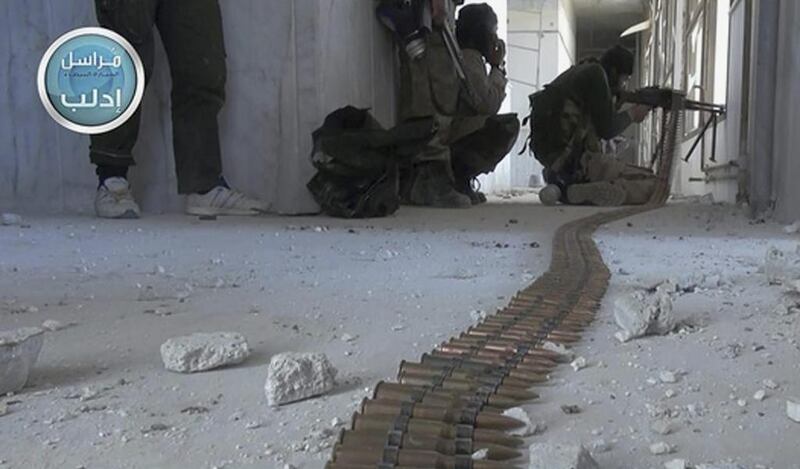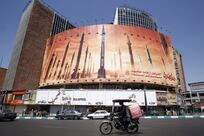A month ago there was a widespread view that the Syrian war was stuck in a stalemate that, with only minor ebb and flow among the warring parties, would last for years if not decades. That view has been upset by some significant losses suffered by regime forces in the north-west, including the city of Idlib, while expected counter-attacks elsewhere have faltered. Opposition forces are now in a position to threaten vital regime strongholds on the Mediterranean coast.
While the imminent fall of the regime cannot be predicted – the army and its supporting militias merely need to hold territory while the rebels have a harder task in conquering new ground – it is clear that the balance of forces is shifting. Key players, most importantly Iran, have serious decisions to take.
The idea that the rebel groups were going nowhere stemmed largely from the mismatched aims of their supporters. Washington has been wracked with indecision over whether the Assad regime remained the problem, or could be part of the solution. Differences among the Gulf Arab states, and between them and Turkey, added to a sense of drift. With control of the air, the regime seemed secure. A newly confident president Bashar Al Assad gave a series of interviews to the foreign media to press home the idea that he should be part of the solution.
The narrative of stalemate rested on the western assumption that the Arab Gulf states were caught between two threats – Iranian expansionism or Islamist subversion. That assumption of policy paralysis, however, has been blown away by a more assertive tone from Saudi Arabia, particularly in Yemen.
The Syrian rebels appear better armed and more united, while the regime forces are suffering the attrition of four years of war, with repeated call-ups of young men testing the loyalty of families in regime-held areas. The foreign militias mobilised by Iran in support of the Syrian regime have been depleted by Iraqi Shia volunteers leaving to fight against ISIL at home.
These developments inside Syria and the region point to one conclusion: the Iranian intervention, which has so far saved the regime – perhaps at the cost of $2 billion (Dh7.35bn) a month to the Tehran treasury – can no longer be usefully scaled up. It is possible for Iran to mobilise more foreign fighters – for example among Afghan Shia refugees living in Iran – but the time is coming when the regime will rely so strongly on Tehran that it will look like a client state.
There are signs of disaffection among the Syrian officer class at Iran’s growing role in fighting the insurgency, in particular its boosting of the National Defence Force militia at the expense of the army. On one level Iran is transferring to Syria its own system, where the Revolutionary Guards and their Quds Force expeditionary arm outweigh the regular armed forces in prestige and equipment. But this technique will enfeeble an already weak Syrian state. The process can be seen in Lebanon, where the Shia Hizbollah militia has eaten away at Lebanese statehood over the past 30 years, and in Iraq, where sectarian militias are undermining the idea of a secular society. In short, the creation of well-armed shadow institutions is a successful recipe for leaving Arab states weak and open to Iranian influence.
Further Iranian involvement will only raise more questions in the army: what are they fighting for? Is it so that Iran can have a strategic corridor to the Mediterranean? And why should young men die for a president who has so signally failed to preserve the nation?
Now is the time for Iran to decide. A new round of Syrian peace talks is due to open in Geneva today. Hopes are not high – these are merely separate consultations over five weeks between the UN and a wide range of parties. But it is understood that Tehran has been invited for the first time.
The Iranians make no secret how important their alliance with Syria is. By providing a supply route to Hizbollah in Lebanon and bringing their forces face-to-face with Israeli troops on the Golan Heights, it elevates Iran from a peripheral power in the region to a central actor. The question now is whether this dream of power projection inevitably involves Mr Al Assad.
To back the president to the bitter end could be a losing bet. At this stage it seems more likely that the rebels will eventually conquer Damascus than that the Assad clan will regain control of the whole country. To engineer a change at the top – a palace coup – would be difficult, but it must be an option.
The alternative is to pour more men and money into backing the regime, with no prospect of success. More foreign fighters cannot compensate for the regime’s inability to mobilise its own defence. The 7,000-8,000 foreign fighters that Iran has mobilised have saved the Syrian regime. Even double that number would not turn the tide to reconquer the lost part of the country. The Iranians could argue, why stop now? Their current situation – having a position of power in Baghdad, Beirut, Damascus and Sanaa – would have seemed a fantasy back in 2003 when the Americans invaded Iraq. A nuclear deal would open the way for increased oil exports and boost their capacity to fund foreign interventions.
But that is the wrong interpretation. Iran is overexposed and its power-projection is serving to unite the Gulf Arab states. Now is the time to think of how the Syrian war can be reduced in intensity, not to pour more weapons in.
Alan Philps is a commentator on global affairs
On Twitter @aphilps





